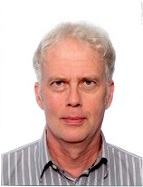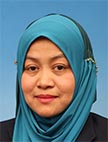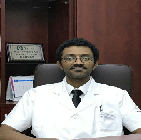Day 2 :
Keynote Forum
Jukka P. Matinlinna
The University of Hong Kong, hong Kong
Keynote: Restorative Materials Tomorrow
Time : 10:00-11:00

Biography:
Jukka P. Matinlinna is tenured professor in dental materials science at the University of Hong Kong (HKU), Faculty of Dentistry. His main field of research, in addition to undergraduate and postgraduate dental teaching and education, is dental materials with regard to adhesion, material development, adhesion promotion, and system simulations. His special focus is on contemporary and future dental biomaterials in prosthetic dentistry and implant dentistry; silane chemistry; adhesion promotion aspects; saliva chemistry; dentin bonding; resin bonding to zirconia and porcelain, Ti and Ti alloys; experimental primers and resins; E-glass fiber–reinforced composite (FRC) restorations; and finite element analysis (FEA). Since 2004 he has contributed to more than 160 peer-reviewed indexed publications, 40 professional journal publications, 25 book chapters, 170 conference and symposium abstracts, and 85 invited/keynote lectures. Professor Matinlinna has acted as guest editor and is a member of editorial boards of several dental journals. In 2015 he was awarded HKU Faculty Outstanding Teacher Award, Faculty of Dentistry.
Abstract:
We are using restorative dental materials to restore or help in restoring missing, diseased, and traumatized teeth, tooth structures and tissues. Dental materials and, in general, biomaterials have been initialized and developed at dental schools. Dentists are the only authorized end users of dental biomaterials. Novel, innovative emerging dental materials are at the front position of new technologies in dentistry. Dentistry has been moving rapidly toward adhesive and noninvasive direction, the so-called conservative dentistry. Dental materials science is an integral, multidisciplinary domain in dental sciences. Materials in dentistry are predominantly synthetic, such as resin composites, silver amalgam, dental cements etc. Restorative dental materials can be classified according to the principles of direct application as a) direct restorative materials and b) indirect restorative materials. Direct restorative materials such as resin composites, silver dental amalgam, and glass ionomer cements are used directly inside the oral cavity to restore the function of teeth. Some of them are aesthetic. Indirect restorative materials, such as porcelain fused to metal (PFM), high content gold alloys, non-precious metal alloys, and indirect resin composites are prepared in a dental laboratory. But are the current dental materials already optimal and can they serve well and long enough? What different type of dental materials do we have in clinical use today? What is so special in the materials one is using in dentistry? To which direction are dental materials going? Do we have adhesive dentistry also in the future? How about 3D printing and dentistry? These are some of the questions this talk is addressing. The chemical and physical properties of restorative materials are also covered in a concise but clinically exciting and comprehensive way. Basic concepts of e.g., adhesion and bonding of dental restorative materials are also introduced.
- Orthodontics and Dentofacial Orthopaedics | Oral Implants Research | Periodontology and Restorative Dentistry
Location: A

Chair
Wan Zaripah Wan Bakar
Universiti Sains Malaysia, Malaysia
Session Introduction
Kholoud Alahdal
Security Forces Hospital, KSA
Title: Ceramic Veneers where to start from and how to decide

Biography:
Abstract:

Biography:
Abstract:
Yassir Abdelrahman Hag Elkhidir
Suihua Stomatological Hospital, China
Title: The osteogenic effect of photofunctionalization on gold nanoparticles applied on biomimetic titanium surfaces

Biography:
Dr.Yassir has completed his MDS in oral surgery and Implantology in 2014 at Huazhong university of Science and technology and was awarded the full PhD scholarship for outstanding students. Upon completion in 2017, he was the first Sudanese to obtain such a degree in the field of Oral Implantology. His works on titanium surface modification has resulted in remarkable improvements in the speed and extent of bone regeneration. Currently he is working in the department of oral implantology and dentofacial surgery at Suihua, the first affiliated stomatological hospital of Jinan University - Guangzhou, P.R.China.
Abstract:
Objectives: The aims of this study were to create a new surface topography using simulated body fluids (SBF) and gold nanoparticles (GNPs), to assess the osteogenic effect of the new surface on osteoblastic differentiation with and without UV photofunctionalization.
Materials & Methods: Commercially pure titanium plates (cpTiO2) were divided into six groups with different modifications. All 6 groups were acid etched with 67% sulfuric acid (H2SO4), four were immersed in simulated body fluid (SBF) for 24 hours to create a hydroxyapatite layer and two groups were treated with 13 nm gold nanoparticles (GNPs) for 24 hours. Half of the TiO2 plates were photofunctionalized (PhF) with UV light for 48 hours to be compared with the non-PhF ones. The main experimental groups were 3B which had H2SO4+SBF+GNPs+PhF and 2B which had the same treatment except for GNPs. Rat’s bone marrow stem cells (rBMSCs) were seeded into the plates and then CCK8 assay, cell viability (live/dead) assay, immunofluorescence and electron scanning microscopy were done after 24 hours. Gene expression analysis was done using real time quantitative PCR (qPCR) was done 1 week later to check for the mRNA expression of Collagen-1 (Col-1), Osteopontin (OPN) and Osteocalcin (OCN). Alkaline phosphatase (ALP) activity was performed after 2 weeks of cell seeding.
Results: Results were analyzed using Prism 5.0 statistical package. One-way analysis of variance was done for multiple comparisons and t-tests for individual comparisons. 3B which had all the treatment modalities showed the highest results and was compared to the closest group 2B. Optical density was almost 50% higher than the control group and significantly higher than 2B with a P value <0.0156) in 2B to 79% (p value <0.0147) in 3B. qPCR results showed the highest increase in the expression of osteogenic genes in 3B. When compared to 2B, 3B showed a significant increase in the expression of all the genes with P values of 0.0238, 0.0238 and 0.0038 for Col-1, OPN and OCN, respectively. 3B also showed just above 20% more increase in the ALP activity when compared to 2B.
Conclusion: We have created a novel hybrid micro-nano titanium surface. TiO2 plates were acid etched, coated with a hydroxyapatite layer using SBF to create biomimetic topography, photofunctionalized and seeded with 13 nm gold nanoparticles. This new surface has a remarkably more osteogenic potential than other surface treatments. The 13 nm GNPs did not show any cytotoxicity. Imunoflourescence and ESM results showed that it highly increased the rate of differentiation, proliferation, attachment, spreading and mineralization. PCR results showed enhanced gene expressions of Col-1, OPN and OCN osteogenic markers. ALP activity was also higher than the other groups. GNPs play an important role in cellular activity and growth. Photofunctionalizing GNPs highly increases its ostogenic capabilities. Our novel topography might be the most biocompatible titanium surface treatment up to date and it may have a good potential in further enhancing the osseointegration process and improving outcomes for maxillofacial and orthopedic patients.
Severine Anthony
Copperbelt University, Zambia
Title: Periodontal health status and treatment needs among psychiatric patients attending Ndola Central Hospital, Zambia

Biography:
Abstract:
- Endodontics | Dental Research | Clinical and Experimental Dentistry

Chair
Jukka P Matinlinna
The University of Hong Kong, Hong Kong

Biography:
Abstract:
Wan Zaripah Wan Bakar
Universiti Sains Malaysia, Malaysia
Title: Interractive lecture and the acceptance level among lecturers in PPSG, USM, Malaysia

Biography:
Abstract:
Yassir Elkhidir
Suiwah Stomatological Hospital, China
Title: Ultraviolet Photofunctionalization for Speed Osseointegration

Biography:
Abstract:
- Endodontics | Dental Research | Clinical and Experimental Dentistry

Chair
Jukka P Matinlinna
The University of Hong Kong, Hong Kong

Biography:
Abstract:
Wan Zaripah Wan Bakar
Universiti Sains Malaysia, Malaysia
Title: Interractive lecture and the acceptance level among lecturers in PPSG, USM, Malaysia

Biography:
Abstract:
Yassir Elkhidir
Suiwah Stomatological Hospital, China
Title: Ultraviolet Photofunctionalization for Speed Osseointegration

Biography:
Abstract:
Aditi Jain
Ayush University of Medical Science, India
Title: Antibacterial efficacy of neem, triphala, green tea and combination of neem with triphala extract against Enterococcus faecalis: An in vitro study

Biography:
Abstract:
Sanjeev Kunhappan
Government Dental College, India
Title: Taming the “LEO†(Lesion of Endodontic Origin)

